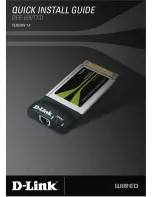
Architecture
1674
SPRUH82C – April 2013 – Revised September 2016
Copyright © 2013–2016, Texas Instruments Incorporated
Universal Serial Bus 2.0 (USB) Controller
34.2.10 Reset Considerations
The USB controller has two reset sources: hardware reset and the soft reset.
34.2.10.1 Software Reset Considerations
When the RESET bit in the control register (CTRLR) is set, all the USB controller registers and DMA
operations are reset. The bit is cleared automatically.
A software reset on the ARM CPU does not affect the register values and operation of the USB controller.
34.2.10.2 Hardware Reset Considerations
When a hardware reset is asserted, all the registers are set to their default values.
34.2.11 Interrupt Support
The USB peripheral provides the interrupts listed in
to the interrupt distributor module (INTD).
For information on the mapping of interrupts, see your device-specific data manual.
Table 34-29. USB Interrupts
Event
Acronym
Source
ARM Event = 58
USB0_INT
USB 2.0 Controller
34.2.12 DMA Event Support
The USB is an internal bus master peripheral and does not utilize EDMA events. The USB has its own
dedicated DMA, CPPI 4.1 DMA, that it utilizes for DMA driven data transfer.
34.2.13 Power Management
The USB controller can be placed in reduced power modes to conserve power during periods of low
activity. The power management of the peripheral is controlled by the processor Power and Sleep
Controller (PSC). The PSC acts as a master controller for power management for all of the peripherals on
the device. For detailed information on power management procedures using the PSC, see the
Power and
Sleep Controller (PSC)
chapter.















































